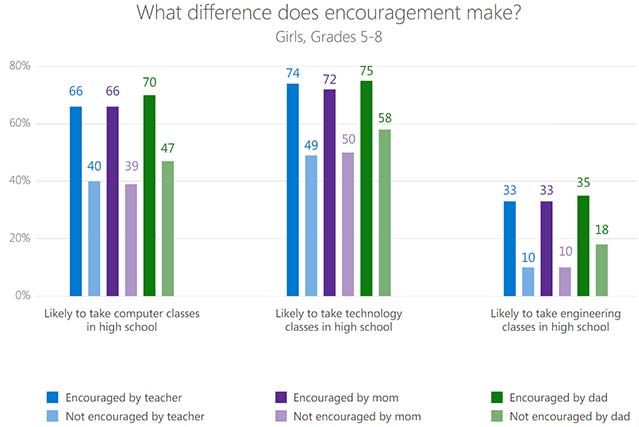Economist Andrew McAfee suggests that, yes, probably, droids will take our jobs — or at least the kinds of jobs we know now.


Economist Andrew McAfee suggests that, yes, probably, droids will take our jobs — or at least the kinds of jobs we know now.

Robots aren’t going to take everyone’s jobs, but technology has already reshaped the world of work in ways that are creating clear winners and losers. And it will continue to do so without intervention, says the first report of MIT’s Task Force on the Work of the Future.
Widespread press reports of a looming “employment apocalypse” brought on by AI and automation are probably wide of the mark, according to the authors. Shrinking workforces as developed countries age and outstanding limitations in what machines can do mean we’re unlikely to have a shortage of jobs.
But while unemployment is historically low, recent decades have seen a polarization of the workforce as the number of both high- and low-skilled jobs have grown at the expense of the middle-skilled ones, driving growing income inequality and depriving the non-college-educated of viable careers.
This is at least partly attributable to the growth of digital technology and automation, the report notes, which are rendering obsolete many middle-skilled jobs based around routine work like assembly lines and administrative support.
Jeff Bezos’ Blue Origin space venture and Elon Musk’s SpaceX are often at odds, but there’s at least one place where those two space-industry rivals are on the same page: the newly unveiled Space Talent job database.
The search engine for careers in the space industry is a project of Space Angels, a nationwide network designed to link angel investors with space entrepreneurs.
“If you’ve ever considered working in space, this jobs board has 3,000 reasons to make the leap,” Space Angels CEO Chad Anderson said in a tweet.

Generally girls lose interest in STEM careers as they get older. But, according to a new study, small changes at school and at home can have a profound impact on how girls perceive STEM careers, how confident they feel in class and how likely they are to pursue STEM academically and into their careers.
The study, “Closing the STEM Gap,” published today by Microsoft, surveyed more than 6,000 girls and young women on their interests and perceptions of science, technology, engineering and math. It found that girls tended to lose interest in STEM as they headed toward adulthood. And, by the time they’d finished high school, their interest had dropped substantially. For example, the report found that interest in computer science among females dropped 27 percentage points between middle school and college. According to the report: “In middle school … 31 percent of girls believe that jobs requiring coding and programming are ‘not for them.’ In high school, that percentage jumps up to 40. By the time they’re in college, 58 percent of girls count themselves out of these jobs.”
But, the study found, countermeasures both large and small can have a profound effect, including:

IBM HR Director Diane Gherson says that over the next three years, 120 million workers will need retraining as artificial intelligence continues to take jobs.
Artificial intelligence is obviously ready to get started. Over the next three years, about 120 million workers from the 12 largest economies in the world may need to undergo retraining due to advances in artificial intelligence and intelligent automation, according to a study published on Friday by the IBM Institute of Business Value. However, less than half of the CEOs surveyed by IBM said they had the resources needed to bridge the skills gap caused by these new technologies.
Concerns about how AI successes will affect work are not new. Tesla and SpaceX CEO Elon Musk said last month that AI could make many jobs “pointless”. In one report earlier this year, it was discovered that robots could replace people with a quarter of US jobs by 2030.

The year 2017 saw the second highest global tree cover loss recorded in the history of this planet, according to the World Economic Forum. Researchers at the University of Maryland (USA) found an area of tree loss equal to the size of Bangladesh. That equates to losing 40 soccer fields covered in trees every minute for a year. But guess what, Costa Rica took the fight in the other direction, declaring they had officially doubled their tropical rainforests since 2001. Doubled!
How can the world learn from Costa Rica’s experience and use it as a model for other nations? It helps to take a closer look at exactly what Costa Rica has done right in managing this issue, while other countries have failed miserably. In the mid-20th century, three quarters of Costa Rica was covered in lush, verdant tree canopy. Then came loggers, who savagely cleared acres and acres of pristine rainforest, lining their pockets by selling off Costa Rica’s natural resources. At the same time, of course, they were destroying the natural habitats of Costa Rica’s indigenous creatures, for instance Golden toads and Poison dart frogs.
But then, something changed radically in the thought processes of Costa Rican policy makers, and the rate of deforestation slowed, until it eventually dropped to zero. What happened? Costa Rica awakened to the potential of its rich ecosystems and began vigorously safeguarding them. Healthy ecosystems meant tourist dollars and employment opportunities for Ticos throughout the country.

Imagine. Believe Belong. #CERN is hiring newly qualified technicians (up to 4 years’ experience) in a wide variety of domains to work on exciting projects! Join the CERN Technician Training Experience: https://cern.ch/tte #iworkatcern #technicians #jobs N.
Find Great Talent with Career Pages. | powered by SmartRecruiters.

Almost everyone who has thought seriously about this has said that more automation is likely to lead to more inequality.
The robots. They’re coming for your jobs. All of you.
Long the prediction of futurists and philosophers, the lived reality of technology replacing human work has been a constant feature since the cotton gin, the assembly line and, more recently, the computer.
What is very much up for debate in the imaginations of economists and Hollywood producers is whether the future will look like “The Terminator,” with self-aware Schwarzenegger bots on the hunt, or “The Jetsons,” with obedient robo-maids leaving us humans very little work and plenty of time for leisure and family. The most chilling future in film may be that in Disney’s “Wall-E,” where people are all too fat to stand, too busy staring at screens to talk to each other and too distracted to realize that the machines have taken over.

UNICEF is looking for startups applying #datascience, #machinelearning, #blockchain or #XR to prepare young people for the jobs of tomorrow.
The UNICEF Innovation Fund is looking to make up to 100K equity-free investments to provide early stage (seed) finance to for-profit technology start-ups that have the potential to benefit humanity.
If you’ve got a start-up using machine learning (ML), artificial intelligence (AI), blockchain or extended reality, registered in one of UNICEF’s programme countries, and have a working, open source prototype (or you are willing to make it open-source) showing promising results, the UNICEF Innovation Fund is looking for you.

One day, who knows when, artificial intelligence could hollow out the job market. But for now, it is generating relatively low-paying jobs. The market for data labeling passed $500 million in 2018 and it will reach $1.2 billion by 2023, according to the research firm Cognilytica. This kind of work, the study showed, accounted for 80% of the time spent building AI technology.
Is the work exploitative? It depends on where you live and what you’re working on. In India, it is a ticket to the middle class. In New Orleans, it’s a decent enough job. For someone working as an independent contractor, it is often a dead end.
There are skills that must be learned — like spotting signs of a disease in a video or medical scan or keeping a steady hand when drawing a digital lasso around the image of a car or a tree. In some cases, when the task involves medical videos, pornography or violent images, the work turns grisly.